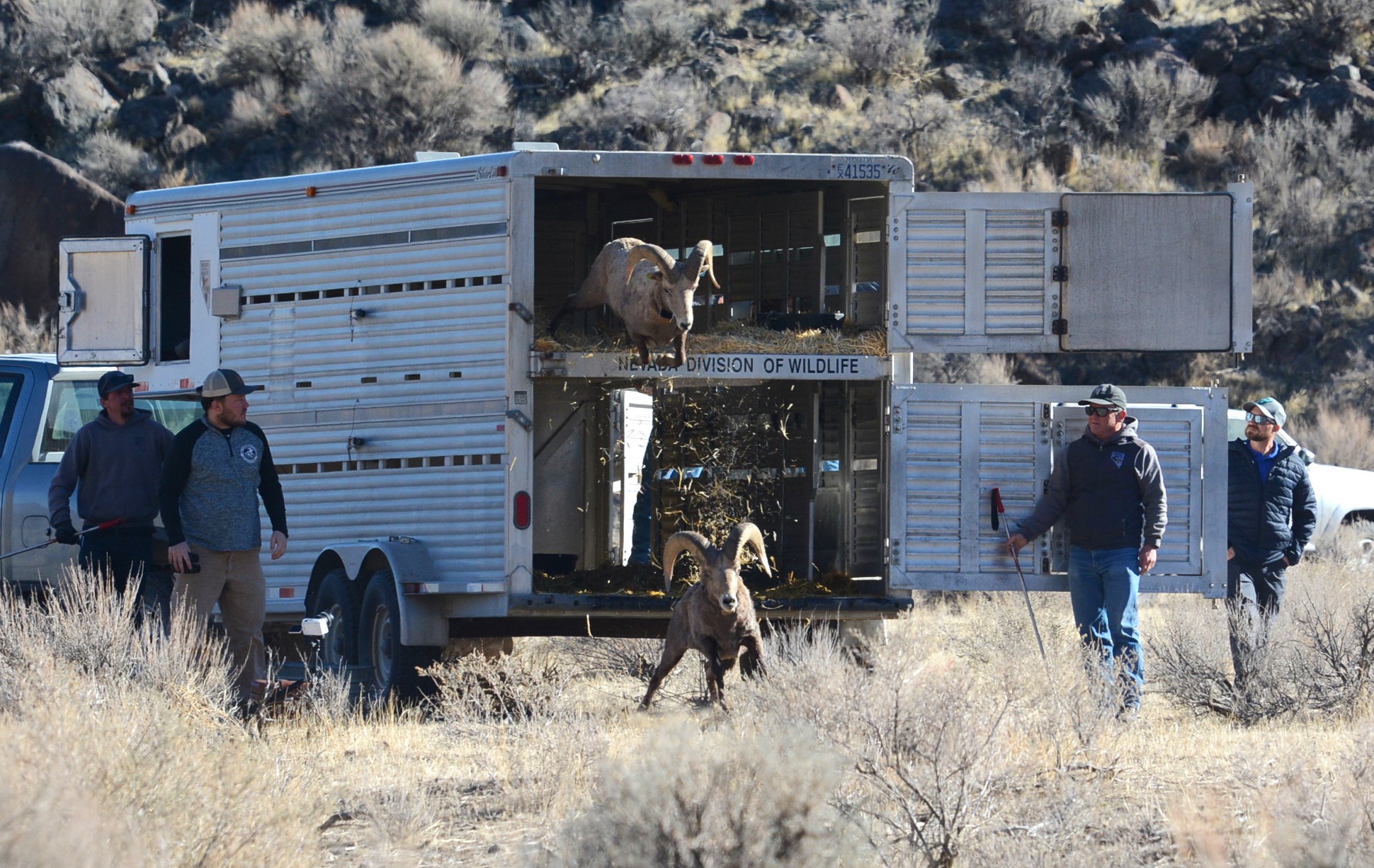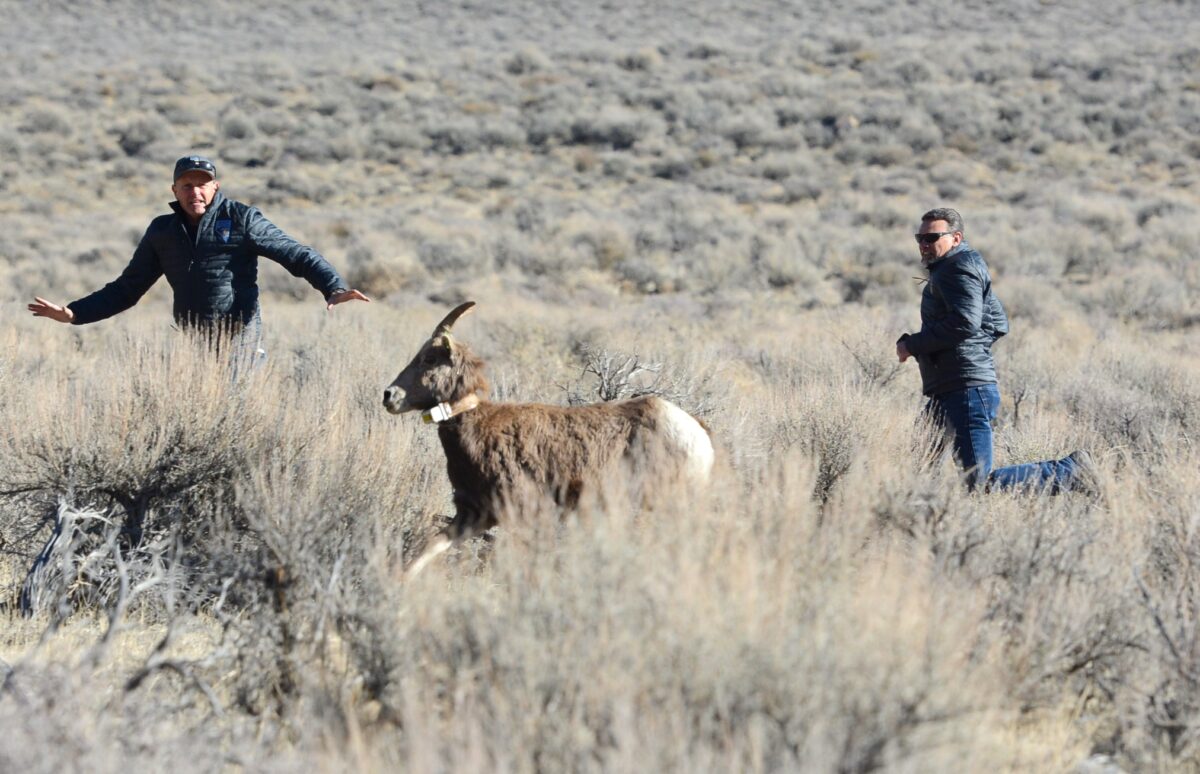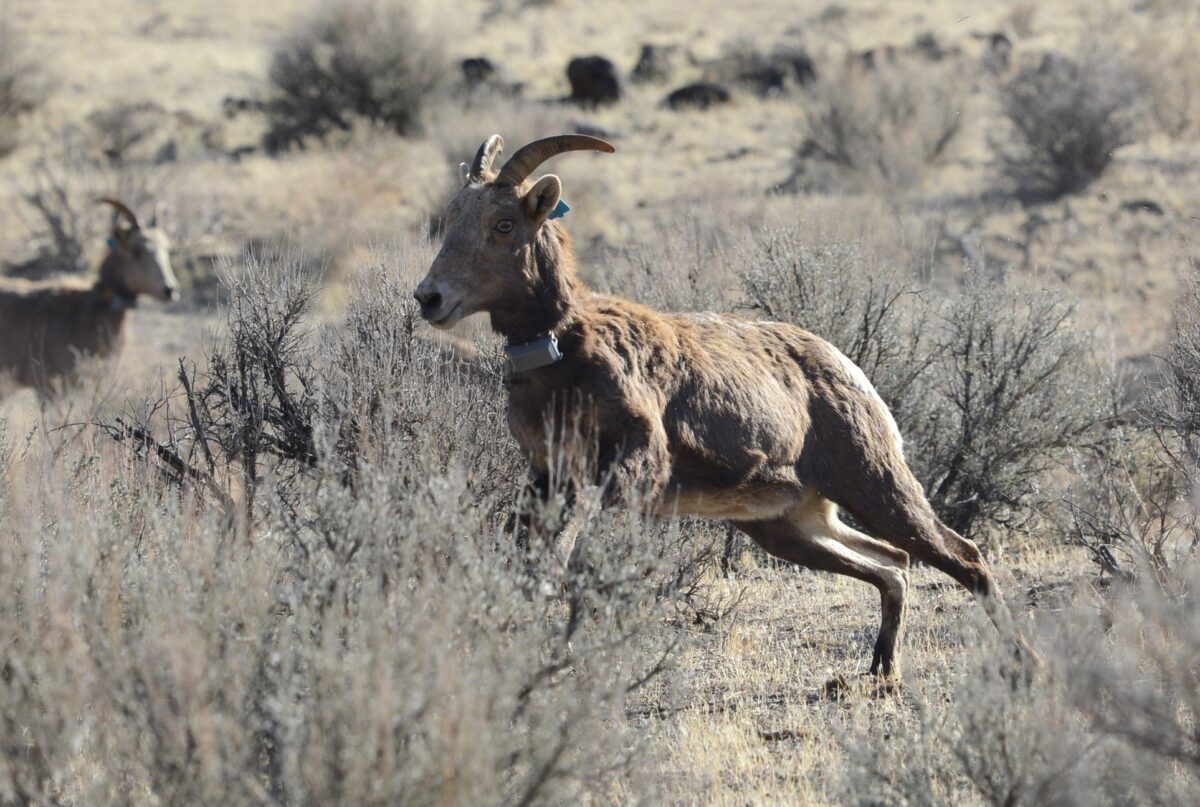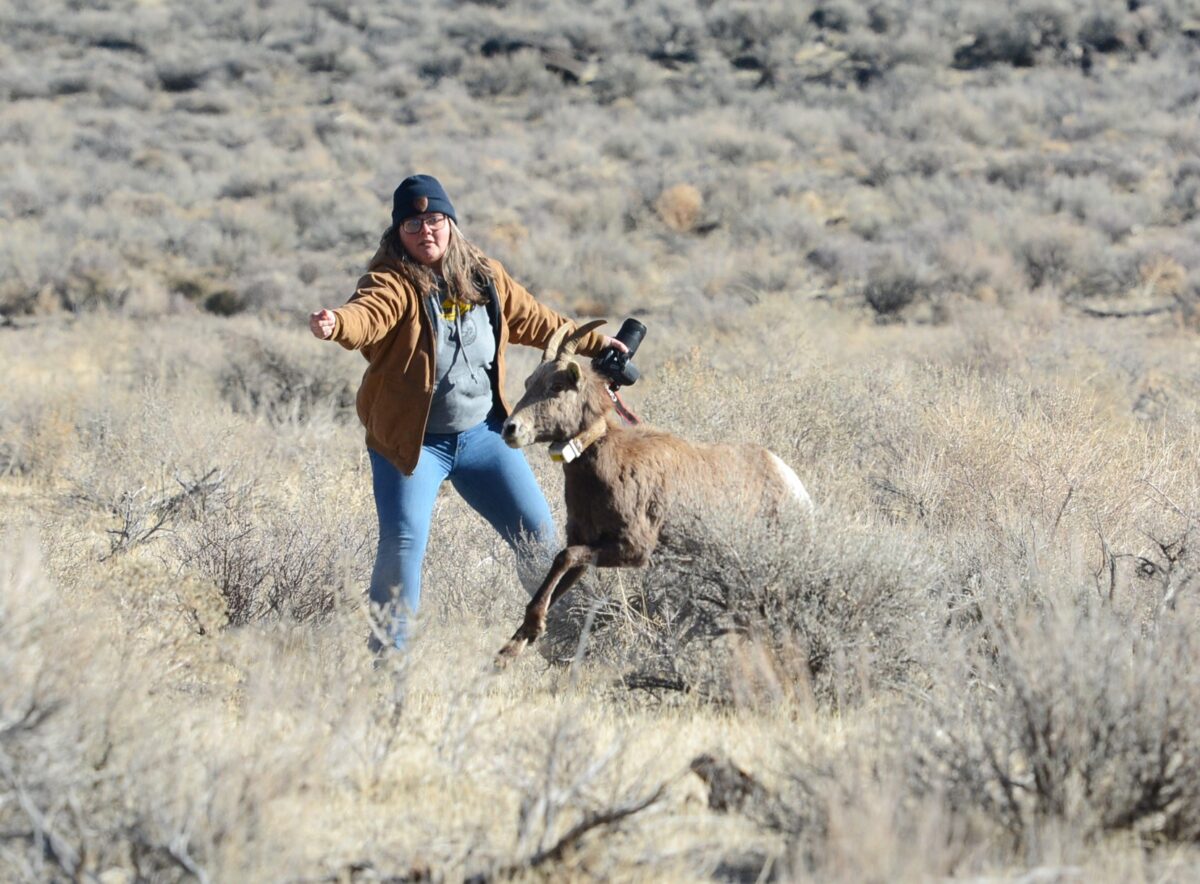‘A keystone species’: How Nevada is fighting bighorn sheep population decline

A silver pickup towing a white horse trailer rumbled along Interstate 80 before turning north on State Route 447 toward Gerlach. Without stopping in town, it bumps its way down rough dirt roads past some of Northern Nevada’s most fantastical and imposing formations — the Black Rock Desert, Fly Geyser, the Calico Mountains, King Lear Peak.
Nearly two hours later at the edge of the Black Rock Desert, the trailer hooked a sharp left onto an even more rugged road leading into Box Canyon. As the slopes looming over the canyon grew steeper and closer together, the trailer came to a stop.
There were no horses in the trailer. Instead, it was filled with 20 bighorn sheep that, just 24 hours earlier, were roaming the Deschutes River drainage of central Oregon. After their capture in Oregon, they were loaded into the trailer to be released in Nevada.
It’s part of an ongoing relocation effort to bolster the state’s struggling bighorn sheep population. Statewide, numbers have declined sharply during the last several years due to drought and disease.
During a two-day period, a total of 40 bighorns were removed from Oregon and released in far Northern Nevada near the Sheldon National Wildlife Refuge, an area the Nevada Department of Wildlife (NDOW) has focused its restoration efforts on for decades. The 40 added were to bolster a herd of about 110 in the Calico Mountains — a larger herd will increase genetic diversity for breeding and provide better protection from predators and disease.
“Those animals will really help that population,” state bighorn sheep specialist Mike Cox said.
Behind the trailer was a caravan of trucks hauling state and federal biologists and members of sportsmens organizations instrumental in the restoration effort — there to witness the release of the bighorns and the culmination of months of work. The thundering sound of hooves as the sheep sprang from the trailer and sprinted up the canyon was their reward.
“We’re restoring an animal that really represents Nevada,” Cox said. “It really was a keystone species that was meant to be here.”

‘Aggressive’ restoration efforts
North America’s bighorns descended from Siberian bighorn sheep that crossed into Alaska more than 1 million years ago. They slowly migrated as far south as Baja California, diverging into three distinct subspecies: Rocky Mountain bighorn sheep, desert bighorn sheep and Sierra Nevada Bighorn Sheep.
Rocky Mountain and desert bighorns are found in Nevada. An offshoot of Rocky Mountain bighorn, the California bighorn, are found in the state as well and are the subspecies biologists relocated from Oregon to the Black Rock.
Prior to European settlement, North America’s bighorn sheep population was estimated at upward of 1.5 million. In Nevada, they were estimated to be the state’s most numerous big game animals, living in every mountain range in the state. By 1900, however, sheep populations were decimated by hunting, grazing and disease within Nevada, as well as nationwide.
In Nevada, “aggressive” restoration efforts were launched in the 1950s by state and nonprofit organizations, Nevada Department of Wildlife Game Division Administrator Shawn Espinosa said, with efforts ramping up even more by the end of the century. Highly sensitive to environmental changes, bighorns are considered indicator species that convey the health of their surrounding ecosystems — a thriving sheep population indicates a healthy ecosystem.
Those efforts have reintroduced bighorn in 60 of Nevada’s more than 300 mountain ranges, and the state’s sheep population now hovers around 8,500.
But Nevada’s ungulates are still facing an uphill battle.
Six years ago, there were about 12,500 bighorns across Nevada, but it’s estimated that more than 4,000 have since died. As of 2024, there were less than 2,000 California bighorn sheep and slightly more than 330 Rocky Mountain bighorns in the state. There are more than 6,000 desert bighorns, the official state animal.
More than three-quarters of those deaths were attributed to disease, Cox said, to which the sheep are particularly susceptible. A form of pneumonia can spread between herds of bighorns, as well as through domestic sheep (which usually don’t show signs of illness.) There is no treatment for the fatal respiratory disease in bighorn sheep.
“It’s the biggest loss that we have ever seen in modern times,” he said.
Drought is also taking its toll. In Southern Nevada, where it hasn’t rained in more than 200 days, 37,000 gallons of water have been hauled in this winter to assist struggling wildlife, with additional hauls anticipated.
Sheep may eventually have to be removed from the area to adjust for the limited forage and water, Cox said, although there is only one Southern Nevada herd (in the Muddy Mountains) that hasn’t tested positive for the illness that wiped out so many of the state’s sheep. The number of contaminated herds in Southern Nevada makes it dangerous to relocate them throughout the state, where they could sicken otherwise healthy herds.
“If we don’t start getting some more precipitation and snow, it’s not going to be good,” Espinosa said.

Increased vigor, genetic diversity will help
California bighorn sheep were reintroduced to the Calicos in 1989, when NDOW released 18 sheep from British Columbia. Known as a high-quality sheep habitat, the Calicos feature rugged terrain that allows the ungulates to more easily escape predators.
The department built up the Calicos’ bighorn population throughout the 1990s, and by 2007, the mountains boasted more than 280 sheep.
But it now has less than half that many, and the existing herd is too small to sustain itself, Cox said.
The addition of the 40 sheep should help.
“We think we’ll get some vigor out of this herd by releasing these animals,” Espinosa said.
Many of the released sheep were outfitted with GPS collars that allow biologists to track their movements and eventual death.
Two of the relocated sheep have already died from what biologists call “capture myopathy” brought on by the stress of the relocation. Biologists are also tracking several others whose movement patterns in the first few days after the release indicated the sheep weren’t adjusting well to the translocation — a week after the release, they seem to be faring better, Cox said.
Most of the sheep appear to be adjusting and healthy, dispersing up to about 15 miles from their drop-off site within a week.
“Now, Mother Nature takes over the wheel and will drive and decide the fate of [the] bighorn,” Cox said.

